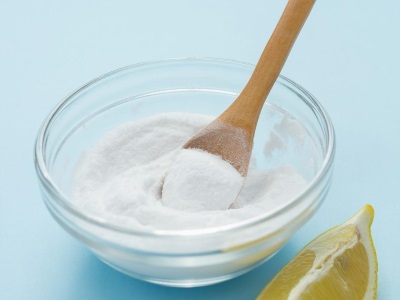
While baking soda is allowed on the Paleo diet, commercial baking powders are NOT. This is because baking powder frequently contains unfavorable ingredients (like gluten, cornstarch, and aluminum) that are not Paleo and that many people react adversely to. While they may look and act similarly (both are white crystalline powders that act as leavening agents in the baking process), let it be known that commercial baking powder should not be included in a Paleo diet. But fret not! You don’t have to forgo all of those fabulous recipes that call for baking powder…keep reading to find out how to make your own Paleo-friendly baking powder!
Nutritional Value of Baking Powder
Serving size: 1 teaspoon (4g)
- Calories: 5
- Total Fat: 0 g
- Saturated Fat: 0g
- Trans Fat: 0g
- Cholesterol: 0 mg
- Sodium: 590 mg
- Total carbohydrate: 1 g
- Dietary Fiber: 0g
- Sugars: 0g
- Protein: 0 g
- Vitamin A: 0%
- Vitamin C: 0%
- Calcium: 4%
- Iron: 0%
*Nutritional information given is for Bob’s Red Mill Non-Aluminum, Double-Acting Baking Powder, which is not Paleo (contains corn)
Benefits of Baking Powder
Most commercial baking powders are a mixture of 30% baking soda in combination with one or more acid salts (such as monocalcium phosphate and sodium aluminum sulfate). Commonly cornstarch, potato starch, or another grain-based starch is also added to absorb moisture and to prevent the active ingredients from clumping together. When baking powder is introduced to moisture or heat (i.e. during the baking process), the acid salts and the alkaline baking soda undergo an acid-base reaction to release carbon dioxide bubbles that form little air pockets in the batter. This process, known as leavening, is an important chemical reaction in baking, as it facilitates breads to rise and imparts a light and airy quality to dough and finished baked goods. Baking powder can also be used for cleaning a variety of household items, although it is not quite as effective as alkaline baking soda for this purpose, due to its higher acidity level.
Is Baking Powder Paleo?
The majority of baking powders available commercially are NOT considered Paleo. As mentioned, cornstarch is a common ingredient in baking powder, even in “gluten-free” varieties. Many people are sensitive to even the smallest amounts of corn, and corn is a well-known source of GMOs (genetically modified organisms). In addition, aluminum (i.e. sodium aluminum sulfate, sodium aluminum phosphate, sodium acid pyrophosphate, etc.) is commonly used as an acid salt in commercial baking powders. Aluminum is a heavy metal with known toxicities, and has been linked to the development of neurological disorders including Alzheimer’s Disease. That being said, the U.S. Food & Drug Administration considers baking powder to be safe (GRAS) when consumed within recommended amounts. As with anything, overdoses can lead to toxicity.
How to Make Paleo-Friendly Baking Powder
Making your own baking powder is easy, fast, and cheap! Moreover, it guarantees that you won’t be inadvertently consuming corn or other grains, aluminum, or GMOs. Furthermore, by preparing your baking powder fresh, you maximize the acid-base chemistry to ensure the best leavening outcome possible (commercial baking powders lose their potency and leavening powers over time).
Because they are not interchangeable in recipes, you don’t want to just replace the baking powder in a recipe with baking soda. You’ll first need to add an acidic ingredient to your baking soda, such as cream of tartar (tartaric acid), lemon, or vinegar. The recipes below use Paleo-friendly acidic ingredients which interact with baking soda to produce the carbon dioxide bubbles involved in leavening.
Making your own Paleo baking powder is super easy! All you have to do is this:
Mix 1 part baking soda to 2 parts cream of tartar in a bowl and use immediately. That’s it!
- To make 1 tablespoon of baking powder, mix together 1 teaspoon of baking soda and 2 teaspoons cream of tartar
- To make 1 teaspoon of baking powder, mix together 1/4 teaspoon of baking soda with 1/2 teaspoon of cream of tartar
We don’t recommend mixing a large amount to store, as it will absorb moisture and lose potency quickly. You can also mix baking soda with other acidic ingredients (such as vinegar, lemon juice, applesauce, or molasses) as a substitution for baking powder. Because the acidity of these foods varies, you will need to add enough acid to react with your baking soda to produce CO2.
To make the equivalent of one teaspoon of baking powder, try mixing together the following ingredients:
- 1/4 teaspoon baking soda with 1.5 teaspoons vinegar or lemon juice.
- 1/4 teaspoon baking soda with 1/4 cup of molasses.